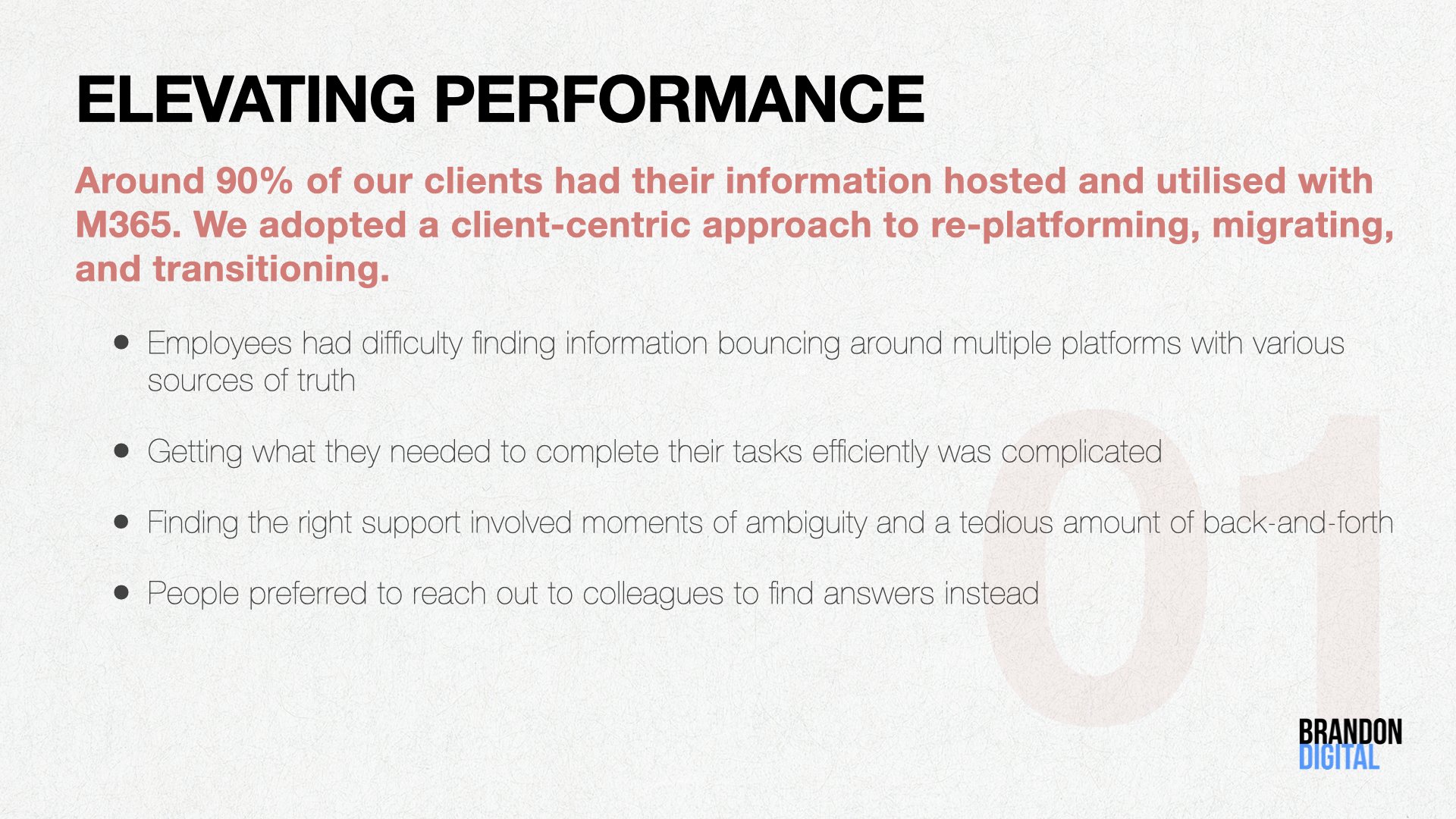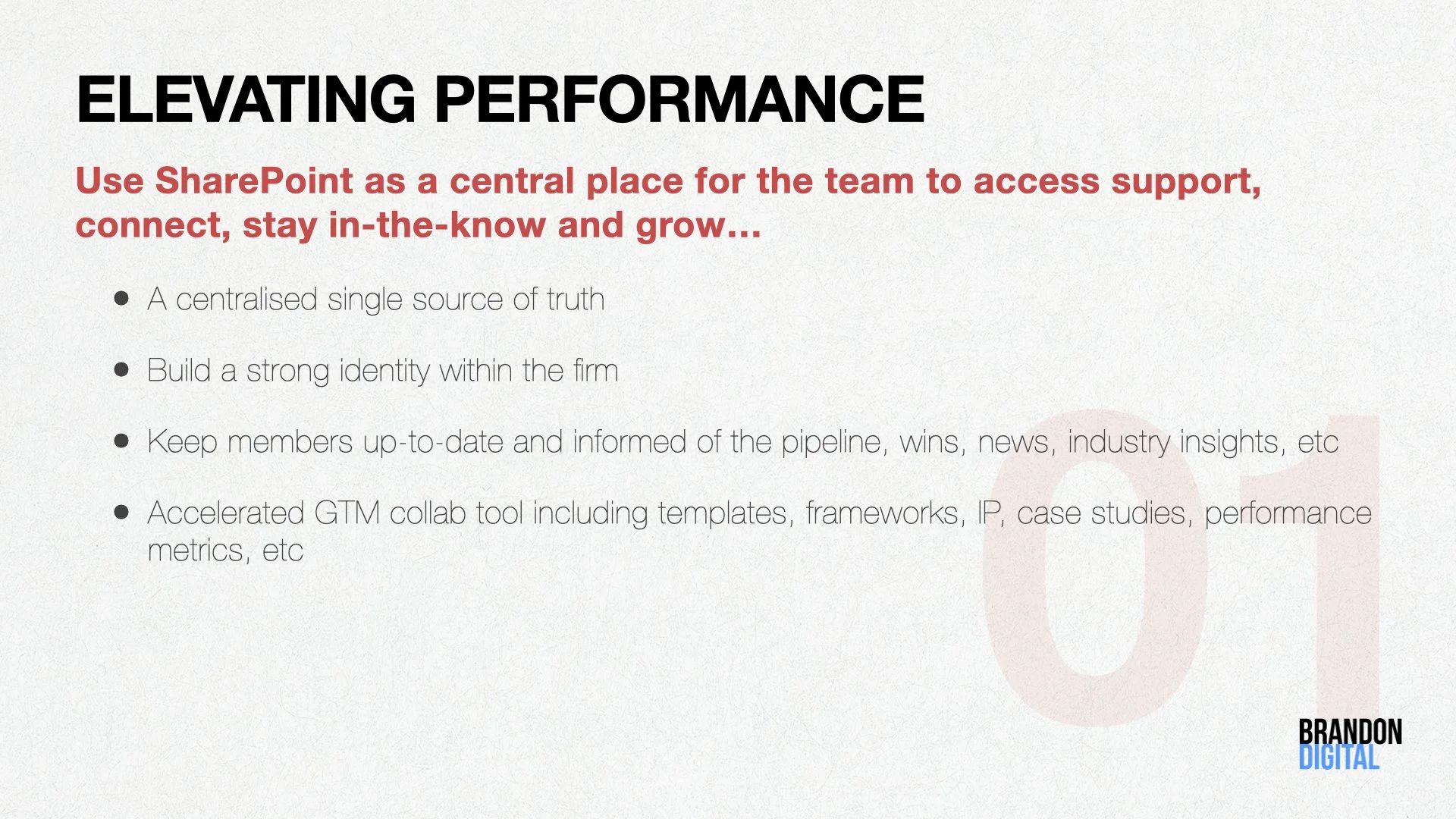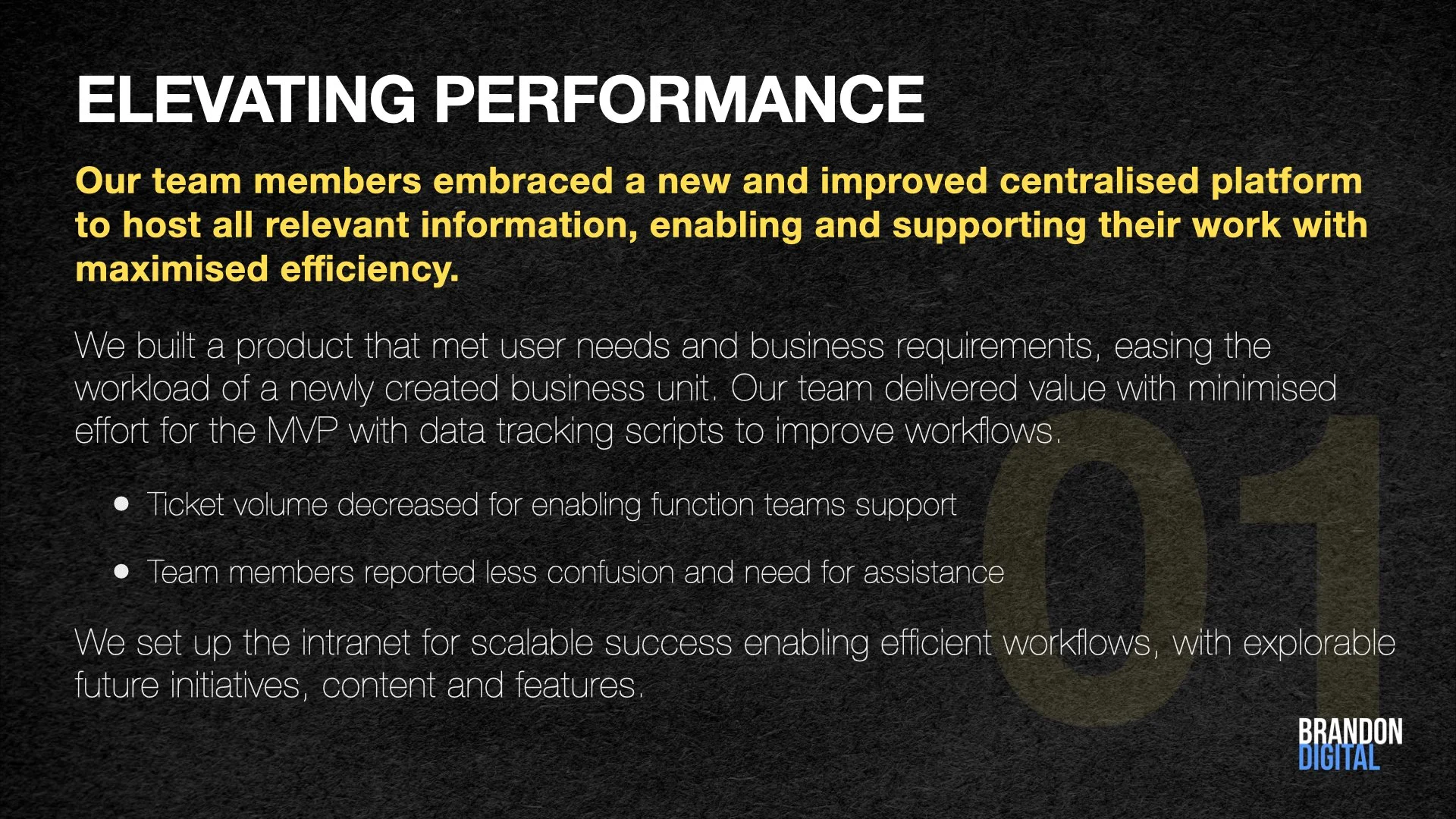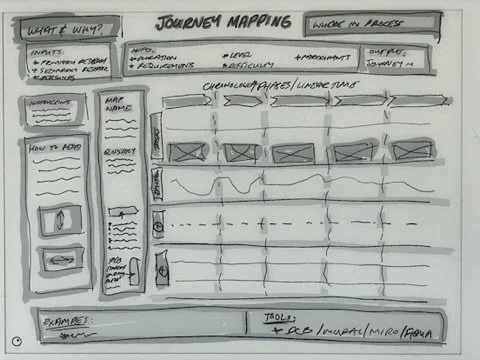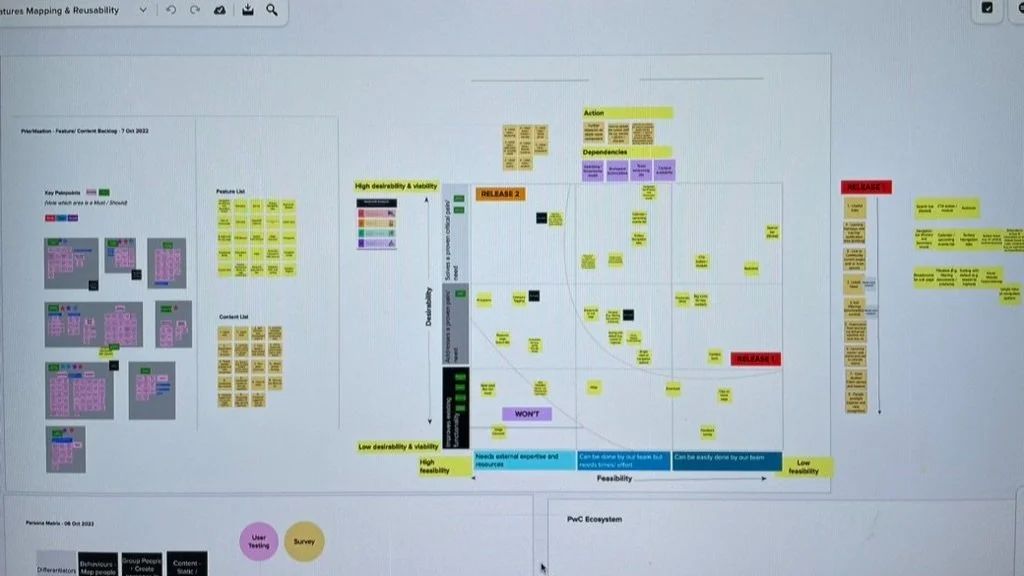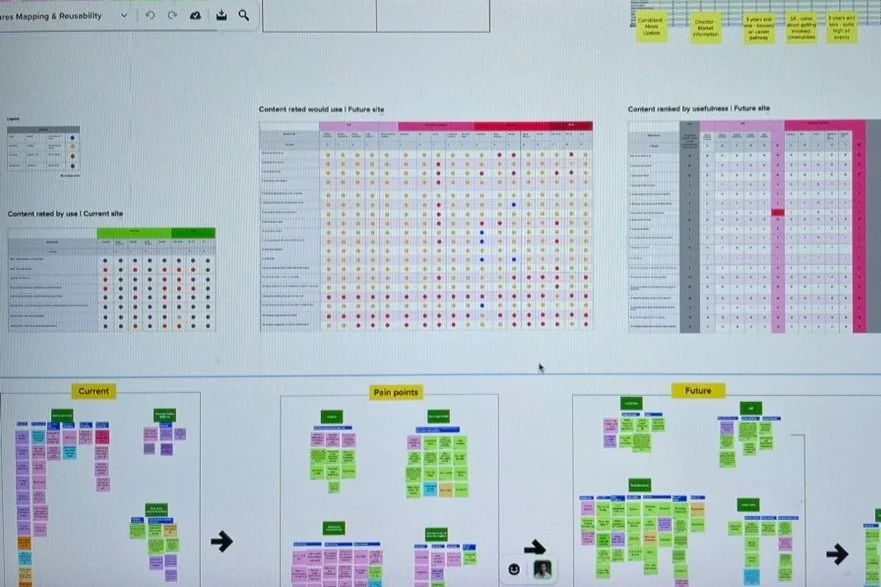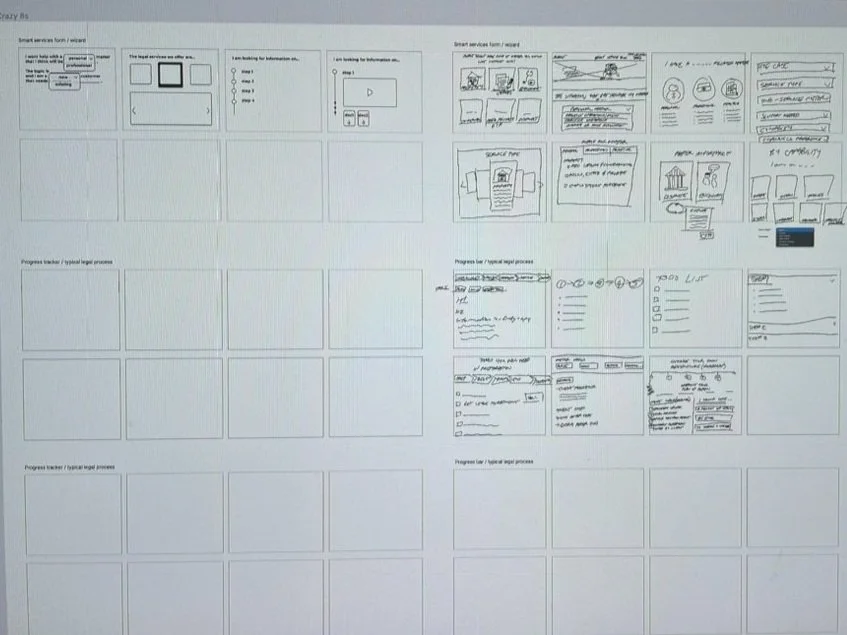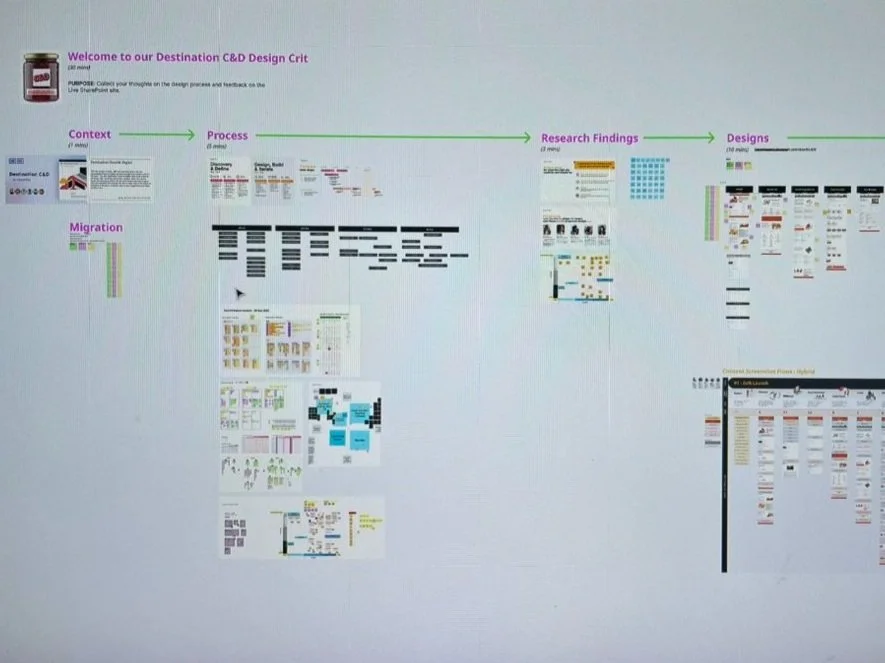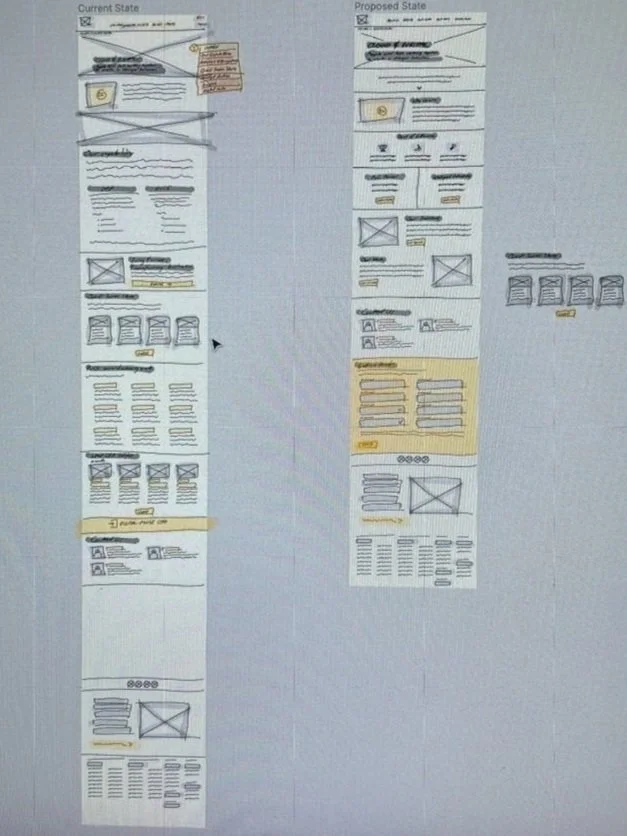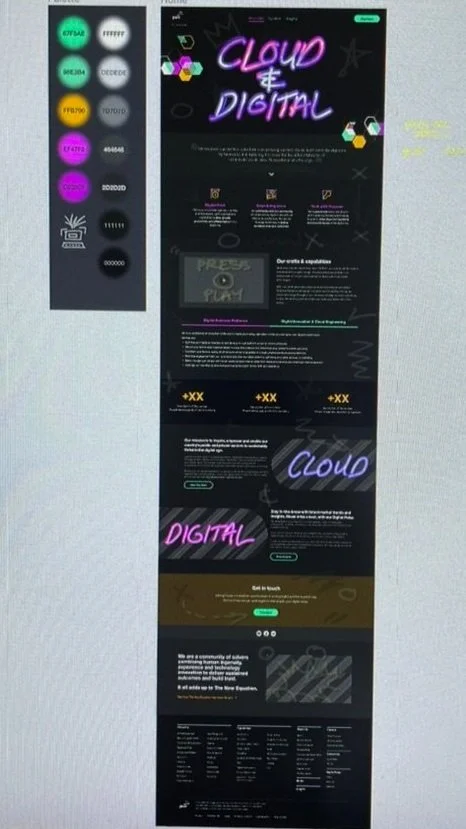
ELEVATING PERFORMANCE
Business Operations & Management
Professional Services
|
Change Management
|
Firm-wide Migration
|
Employee Experience
|
Systems & Processes
|
Frameworks
|
Intranet
|
Research
|
Design
|
UX
|
IA
|
Ideation
|
Prototype
|
Website
|
Professional Services | Change Management | Firm-wide Migration | Employee Experience | Systems & Processes | Frameworks | Intranet | Research | Design | UX | IA | Ideation | Prototype | Website |
It takes a lot to take industry-leading firms to new heights. The continuous reflection of performance along with the relentless pursuit of opportunities to; create frameworks, provide L&D, streamline workflows and support channels, amplifies workplace efficiency. Furthermore, attracting and retaining top talent in an age of EVP.
Efficient and streamlined workflows are a top priority in workplaces. By combining innovative technologies, tailored processes, and a focus on collaboration, firms ensure that their teams work effectively and deliver high-quality client services.
Leveraging cutting-edge technologies and partnering with industry leaders, enhances productivity. Investing in software, cloud-based platforms, and data analytics solutions automate routine tasks, eliminates bottlenecks, and reduces manual errors, allowing teams to focus on higher-value activities.
Tailored workflows that align with the firm's goals and values ensure streamlined workflows. By continuously reviewing and refining these processes, the organisation ensures structured and efficient work and improved outcomes.
Effective collaboration and communication are essential to foster a culture of teamwork, where employees share knowledge, seek feedback, and work together towards common goals. Promoting open communication channels and collaborative platforms enables teams to deliver seamless client services.
Commitment to learning about people, leveraging technology, and promoting collaboration play a crucial role. By focusing on innovation and teamwork, organisations uphold high standards of excellence and deliver maximum value. Thoughtful automation can eliminate monotonous tasks, keep employees inspired and reduce churn.
Engagement Details
-
Around 90% of our clients had their information hosted and utilised with M365. We adopted a client-centric approach to re-platforming, migrating, and transitioning. It would strengthen our partnership with the technology giant and our clients and ensure that information security remained of the utmost importance. Additionally, it would lead to breaking down siloed structures, increasing collaboration to make it easier for multidisciplinary teams and workstreams to align with projects undertaken.
To maximise efficiency in the dynamic workplace, we needed to adapt and explore new opportunities, manage risks, refine processes, and migrate to enabling technologies. With the migration of 14,000 employees to an alternative platform we also needed to restructure multiple business and operating units with the transfer of vital assets. Each skill group within these units were assigned the responsibility of transferring all assets, templates, and frameworks within a realistic timeframe. However, to ensure the most efficient outcome for all involved, as well as increase the likelihood of change adoption, appropriate planning, research, categorisation, navigation, documentation, and execution were necessary throughout the process.Employees had difficulty finding information bouncing around platforms with multiple sources of truth.
Getting what they needed to complete their tasks efficiently was complicated.
Finding the right support involved moments of ambiguity and a tedious amount of back-and-forth.
People preferred to reach out to colleagues to find answers instead.
BUSINESS GOALS
Embrace partnership with Microsoft, utilising their full suite of software apps
Reduce the cybersecurity risk associated with hosting sensitive information
Enhance unspoken communication through an informative central source of truth
Use tech platforms clients are familiar with and prefer
Register new leads and initiatives in the pipeline so the team can explore collaboration opportunities
USER GOALS
Minimise the inevitable effort and impact of change
Provide a sound and robust navigation system that helps team members find what they need
Align and educate employees with the new strategic and operational vision of the team
Be unified in the understanding of each skill group within the business unit’s capability and function
Access examples of work, templates and frameworks that enable consistency
Explore avenues of opt-in L&D opportunities offered
Receive accurate and accessible support information, limiting the need to ask colleagues
-
Use SharePoint as a central place for the team to stay informed, grow, connect and access support.Business vision of what it could be…
The source of truth
Build a strong identity
Stay relevant and up-to-date
Informative - pipeline, wins, news, industry insights, etc
Connect & engage team
Collab tool between teams for GTM
Shareable digital assets to accelerate GTM - templates, frameworks, sanitised IP, case studies, performance metrics, etc
GTM external information
What it wouldn’t be…Duplication of existing content
Lift-and-shift exercise
Outdated information
Neglected set-and-forget
Have no change management
Too much labour to maintain
A site just for the LT to drip-feed information
Another site not used because of lack of awareness it exists
Too complicated to use so users fall back into asking colleagues for answers
-
Our team members embraced a new and improved centralised platform to host all relevant information, enabling and supporting their work with maximised efficiency.
We built a product that met user needs and business requirements, easing the workload of a newly created business unit. Our team delivered value with minimised effort for the MVP with data tracking scripts to improve workflows.Ticket volume decreased for enabling function teams support
Team members reported less confusion and need for assistance
We set up the intranet for scalable success with explorable future initiatives, content and features. -
Stakeholder DiscussionsHosting workshops with leadership teams to understand the vision, migration principles and identify critical intranet site aspects from a business viability perspective. The first iteration would ideally include:
Useful Links
Latest News
Market Growth Strategies
Skill Group Offerings
Case Studies
Client Stories & Lessons
Jobs & Initiatives Board (scheduled for later release)
Ecosystem Mapping
It was important to clarify roles and responsibilities during restructuring
Newly created business units and each skill group’s capability
How they operate
Examples of value and experience
Who to contact
Current State Audit & Content Analysis
The goal was to provide a unified and consistent pathway for team members to access information. Previously, multiple sources of truth existed among the 9 skill groups within 2 business units, which would eventually form the new team.
An exercise was conducted to take stock of existing, lift-and-shift, or newly generated content. We captured how each skill group categorised features to find commonalities and assessed the relevance, reusability, shareability, and completeness of assets to be transferred.
Survey
Surveys are known to be a cost-efficient way to gauge the quantified sentiment of employee pain points and motivations for engaging with the offering. This produced amazing results to assess the value of the existing assets.
The previous approach had a major issue - people couldn't find information confidently. Digitising the request process for vital information did not work out well. It was frustrating and time-consuming, adding friction and blockages to workflows. The bouncing around trawling numerous websites, the back-and-forth and the lack of timely responses. This validated the need for a comprehensive, accurate solution to streamline information exchange.
User Interviews
We conducted surveys to gauge different cohort opinions on the existing solution and probed deeper into some of these sentiments with 1:1 sessions from respondents. Learning about the present situation allowed us to set a minimum standard, but as a team committed to excellence, we wanted to make life easier for everyone. By researching our audience, we started afresh and reimagined the experience.
We identified a disparity between the prioritised employee needs and business requirements from insights, proving we had to consider accommodating all common perspectives.
THE WORK ACCELERATOR
“I spend so much time formatting and sifting through old case studies, templates, or asking people to try and find a gold star template. I rather spend my time working on value adding tasks like client engagements and helping solving our client’s problems.”THE BIG PICTURE STRATEGIST
“I want to understand how important my individual role is and how it contributes to the team’s overall success to be inspired.”THE CAREER UPSKILLER
“The L&D section is what I have mostly used because it enables my skills growth so that I can aid more in the ongoing projects.”THE COMMUNITY CONNECTOR
“Having a community so we can celebrate, learn and support each other is essential to having a strong team culture. A strong team culture can improve job productivity, job satisfaction and engagement within a team.”THE INFORMATION SEEKER
“I often have a question that can be quickly answered, but I don’t know where to find this information and who to speak to. It really stops me from being able to continue or commence working on a task.”Contextual Inquiry
Deepdiving into employee task flows gave us insight into task performance and the intricate nuances of employee behaviour observed, allowing us to pre-empt challenges expected during the migration process. As the majority of EAs knew their way around MS Suite Apps, there was less of a challenge for them to adapt to performing their day-to-day tasks, whereas the enabling functions would be encouraged to access concise or detailed step-by-step instructions to resolve their challenges depending on the situation. We assessed their workflows, touchpoints and steps required to complete tasks as part of a pilot experience.
Personas
From the insights collected from research and platform data, we clustered and then organised the mindsets of various user archetypes on a matrix. We created personas to communicate and explain the types of people we were catering for, their key tasks, likes, dislikes, and most frequently accessed content and tools. Personas were treated as a snapshot of collective mindsets rather than being based at an individual level.
Service Blueprinting
Creating a detailed blueprint communicated the proposed changes, problems, solutions and touchpoints to the supporting workstream and the broader workplace ensuring alignment and consistency throughout all channels (frontstage and backstage).
Pilot Experience Testing
All initiatives, opportunities, content and features were recorded on backlog and mapped on a matrix (using hybrid DVF and Kano frameworks) aligning the different workstreams with the proposed rollout events.
By limiting the release to specific cohorts before the official firmwide migration, we could address any challenges with the experience, reducing the amount of support required to resolve changes with necessary help documentation and/or human intervention.
Employee Journey Mapping
We examined the key tasks associated with each user archetype and documented the individual steps required to complete them, including the emotions associated with them. We have also proposed solutions to bridge the experiential gap effectively.
Release Plan
Working on drilling down the site content and features in parallel with the migration experience ensured that no one would feel helpless or left behind on Day One when accessing critical information or requesting for support.
Card Sorting
Running a moderated card sort workshop allowed us to focus on preferences in terminology we would use for a robust navigation menu. However, as the results proved to be rather contentious we decided to throw out the opportunity to ensure we made the right decision. So we created an unmoderated online variation with the help of Maze App to help record and synthesise results.
User Flows
In order to streamline task execution and eliminate operational friction, we documented the sequential steps for each flow, with the aim of visualising the ideal pathway for our workforce. Ideation was undertaken with the objective of creating the most efficient workflows where employees could execute key tasks with ease and proficiency, while removing unnecessary barriers.
Design Crit & Design Jam
Collaborating with the broader design team on the intranet interface allowed us to explore design alternatives, test, measure, optimise and iterate based on the best results.
Crazy 8’s
We hosted a design jam with designers, SharePoint SMEs and front-end devs to cast a wide net to ideate what site elements could be included. Later, following a process of elimination based on feature user experience desirability and tech feasibility when sketching out the proposed intranet solution.
Usability Testing & Analysis
Equipping teams with usability testing insights enabled us to satisfy user expectations and create a meaningful digital product minimising the accrued cost typically associated with building.
Testing ObjectivesMenu navigation for information and support
Terminology and categorisation at deeper levels
The overall usefulness of the site
We found exploring an out-of-the-box solution in SharePoint came with technical limitations and there needed to be a vision to pursue significant customisation.
Feedback
Fewer steps to find information
The inclusion of more useful links
Importance of accurate organisation chart
Control to access deeper level and more detailed content
Updates to the terminology used for headings and copy
Observations
Navigation menu tested well
Users didn’t scroll to access information
Preference toward clicking vs scrolling
Actions
Recategorise assets, templates and frameworks found in useful links
Condense the Hero section above the fold
Utilise the quick links widget to access frequently accessed detailed content
Include dropdown navigation under menu items
Reach out to divisional leaders for skill group-specific content
Defer to the next iteration
Pursue organisation chart customisation with custom coding





